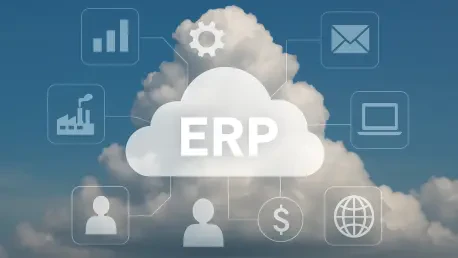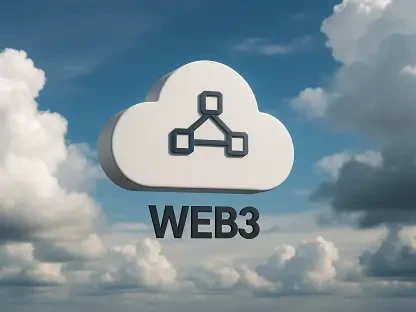In an era where digital transformation dictates the pace of business evolution, many large enterprises face daunting challenges in migrating their intricate ERP systems to the cloud, especially when timelines for such shifts are constrained by operational complexities. SAP, a global leader in enterprise software, has responded to this pressing issue with the introduction of the SAP ERP, Private Edition, transition option. This strategic offering, embedded within the broader RISE with SAP initiative, is tailored for the company’s most complex customers transitioning from traditional SAP Business Suite 7 to modern cloud-based solutions like SAP S/4HANA Cloud Private or Public Edition. It addresses a critical pain point for organizations unable to complete their migration by the end of extended maintenance in 2030, ensuring they can maintain stability while progressing toward full cloud adoption. This move underscores SAP’s commitment to flexibility and support for diverse customer needs in an increasingly cloud-centric landscape.
Bridging the Gap for Extended Transformations
As digital landscapes evolve, not all enterprises can meet stringent deadlines for cloud migration due to the sheer scale and intricacy of their existing ERP setups. SAP recognizes this reality and has crafted the SAP ERP, Private Edition, transition option as a time-limited subscription spanning 2031 to 2033. This solution targets customers anticipating delays beyond the 2030 deadline for extended maintenance of SAP Business Suite 7. During this interim period, essential services such as legal updates, security patches, and critical bug fixes will be provided, safeguarding business continuity. This approach allows organizations to maintain operational integrity while methodically working toward adopting modern cloud ERP systems, ensuring that even the most complex transformations are not derailed by rigid timelines or unforeseen technical hurdles.
The transition option serves as more than a temporary fix; it represents a thoughtful bridge for enterprises with unique challenges in their cloud journey. For many large-scale operations, the process of overhauling ERP systems involves navigating legacy integrations, extensive customizations, and significant data volumes, all of which can extend project timelines significantly. By offering this structured support window, SAP enables these customers to avoid the risks associated with rushed migrations, such as system downtime or data loss. Instead, they can focus on a deliberate pace, aligning internal resources and technical capabilities with the ultimate goal of full cloud integration. This initiative highlights a tailored response to the diverse readiness levels across SAP’s customer base, ensuring no organization is left behind in the push for modernization.
Setting the Stage with Technical Requirements
Eligibility for the SAP ERP, Private Edition, transition option comes with specific technical prerequisites that underscore the importance of preparation. Customers must complete their migration to SAP ERP, Private Edition on the SAP HANA database by December 31, 2030, establishing a foundational step for compatibility with future cloud environments. Additionally, systems are required to meet a minimum size of 2 TB, reflecting the scale of operations typically associated with complex transformations. Addressing unsupported technologies, as detailed in relevant SAP guidelines, is also critical to ensure seamless integration. These criteria are designed to align customer systems with the technical standards necessary for a smooth transition, minimizing potential disruptions during the process.
Beyond these initial conditions, participation in the Max Success Plan, which becomes available in January 2026, is mandatory during the transition period from 2031 to 2033. This plan is positioned as a cornerstone of SAP’s support framework, offering guidance and resources to navigate the intricacies of cloud migration. The emphasis on early technical alignment serves a dual purpose: it prepares organizations for the eventual shift to cloud-based ERP solutions while ensuring they can leverage the transition option without unforeseen compatibility issues. This structured approach reflects SAP’s intent to foster readiness among its customers, particularly those managing extensive and sophisticated IT landscapes, ensuring they are well-equipped to handle the demands of modern enterprise software environments.
Incentivizing Early Commitment with Financial Benefits
To encourage proactive engagement with the transition option, SAP has introduced a tiered pricing model that rewards early adopters with significant financial advantages. Customers committing to SAP ERP, Private Edition by the end of this year can secure the transition option for 2031 at equivalent commercial terms, avoiding any price increase. This offer stands in contrast to a 20 percent price uplift for those signing up in 2026, while pricing details for commitments made closer to 2028 remain undisclosed for now. Such a structure not only provides cost predictability—a vital consideration for enterprises with substantial IT budgets—but also creates a clear incentive for organizations to act swiftly in planning their migration strategies.
The financial framework surrounding this transition option is designed to align with the long-term budgeting needs of large enterprises, many of which must account for multi-year transformation projects. By offering cost-neutral terms for early commitments, SAP mitigates the risk of escalating expenses for customers who take decisive action now. This approach also acknowledges the varying paces at which organizations can mobilize resources for migration, ensuring that those ready to begin immediately are not penalized with higher costs later. The tiered pricing serves as a strategic nudge, encouraging companies to prioritize their cloud journey sooner rather than later, thereby reducing the likelihood of last-minute challenges or rushed implementations that could compromise system stability.
Crafting a Roadmap to Reduce Transformation Risks
The transition option is not merely a contingency plan but a deliberate strategy to minimize disruption during complex ERP migrations. SAP strongly advocates for customers to initiate their migration process at the earliest opportunity, allowing ample time to address technical challenges and align internal teams with transformation objectives. The recommended pathway involves a phased progression: first transitioning to SAP ERP, Private Edition, then utilizing the transition option if additional time is needed beyond 2030, and ultimately adopting a fully cloud-based ERP solution. This methodical approach ensures that businesses can maintain operational focus while systematically upgrading their systems to meet modern standards.
Emphasizing early action also helps organizations sidestep the pitfalls of compressed timelines, such as inadequate testing or insufficient training for staff on new systems. By spreading out the migration process, companies can allocate resources more effectively, tackle potential issues in smaller, manageable increments, and build confidence in their cloud readiness. SAP’s guidance on this structured roadmap reflects a deep understanding of the risks inherent in large-scale IT transformations, particularly for enterprises with intricate dependencies across their operations. This strategic framework offers a balance between maintaining current functionality and pursuing future-ready solutions, ensuring that even the most complex journeys are navigated with reduced risk and greater certainty.
Responding to Industry Trends and Customer Diversity
The introduction of this transition option aligns with a broader industry shift toward cloud-based ERP systems, driven by the imperatives of scalability, agility, and competitive advantage in a digital-first world. SAP acknowledges that while the end goal of cloud adoption is universal, the pathways to achieve it vary widely based on organizational complexity and readiness. This offering caters specifically to those customers who require extended support beyond 2030, providing a safety net that balances immediate operational needs with long-term strategic ambitions. It reflects an adaptive stance, ensuring that enterprises of all sizes and intricacies can participate in the cloud revolution at a pace that suits their unique circumstances.
This tailored solution also mirrors a growing consensus within the enterprise software space that one-size-fits-all timelines are often impractical for large-scale transformations. By offering flexibility through the transition option, SAP addresses the diverse needs of its customer base, from those with straightforward migrations to others managing sprawling, customized systems. The focus on individualized support underscores a pragmatic approach to modernization, recognizing that while the benefits of cloud ERP—such as enhanced data analytics and real-time processing—are undeniable, the journey to realize them must account for real-world constraints. This initiative positions SAP as a partner in transformation, committed to enabling success across varied operational landscapes.
Driving Forward with Strategic Preparation
Looking back, SAP’s rollout of the SAP ERP, Private Edition, transition option marked a pivotal moment for enterprises facing extended cloud migration timelines. It provided a critical lifeline for those unable to meet the 2030 deadline, ensuring business continuity through essential support services while paving the way for eventual cloud adoption. For organizations that acted swiftly, the financial incentives and structured guidance offered a clear advantage in managing complex transformations. Moving forward, the emphasis should be on leveraging this window of opportunity to assess current systems, align with technical prerequisites, and secure favorable terms through early commitment. Engaging with SAP’s Max Success Plan and adopting a phased migration strategy will be key steps in navigating the intricate path to cloud ERP, ensuring that even the most challenging journeys culminate in sustainable, modernized operations.









